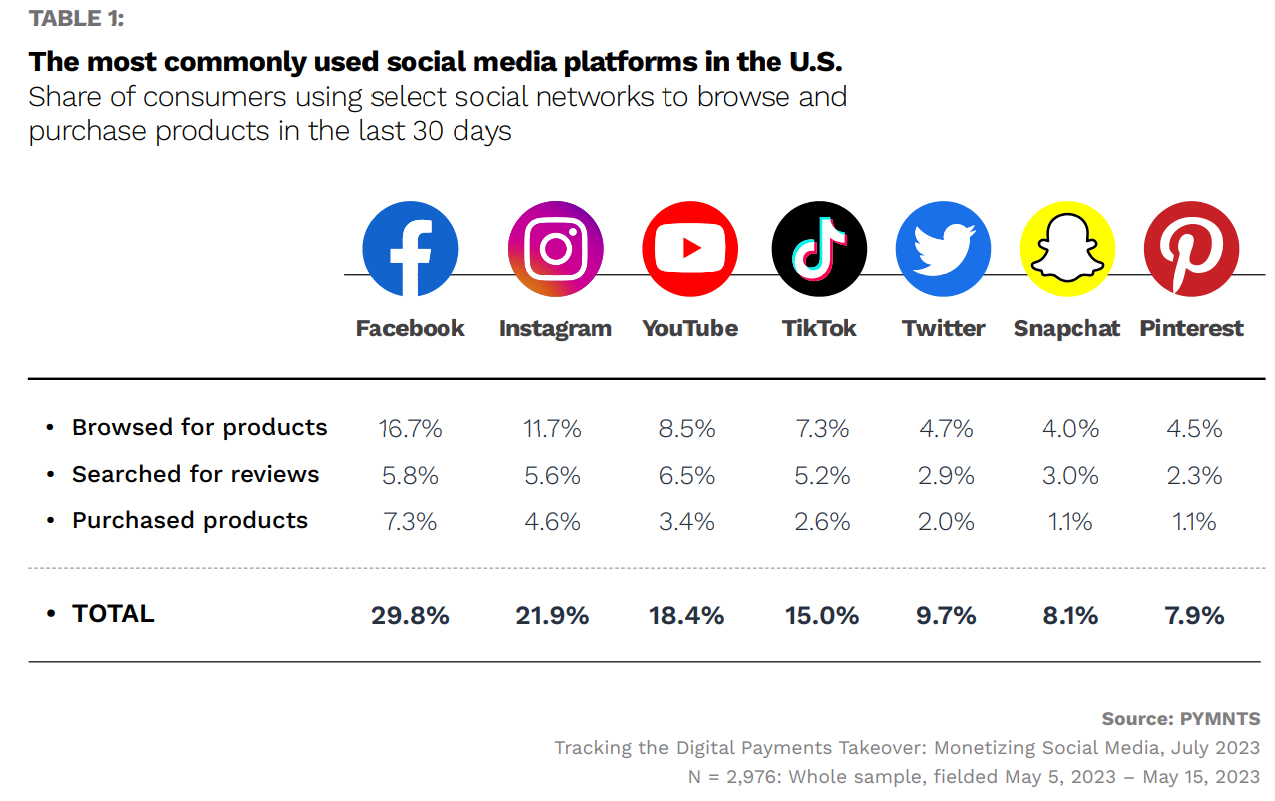Consumers are increasingly connected to social media, and retailers are taking notice.
In a bid to boost engagement and sales, traders have taken to social media platforms to promote their wares. In turn, these platforms make it easier for consumers to buy the things they want instantly. For example, TikTok launched the TikTok Shop in the US in September, bridging the gap between retailers and consumers.
“Tracking the Digital Payments Takeover: Monetizing Social Media,” a study conducted by PYMNTS Intelligence and Amazon Web Services, examined consumer use of social media to review and purchase items. As part of this study, we surveyed a census-balanced panel of nearly 3,000 US consumers.
The study found that 43% of consumers use social media to search for products and services, but only 14% purchase those goods and services through social media.

Consumers really buy differently.
Clothing and apparel, food and beverage, and beauty products are the top three categories of retail products that consumers plan to buy on social media in the next 12 months, according to PYMNTS Intelligence.
However, other categories are expected to record higher growth in social media shopping: pet products, toys and home appliances. The social platform on which consumers plan to shop varies depending on the product category: While consumers turn to TikTok for toys, YouTube is the realm for pets, and Instagram is a leader in home furnishing purchases.
PYMNTS Intelligence data also found that 86% of consumers who currently make purchases via social media confirm that they are very satisfied with making purchases this way. As a result, nearly half of consumers are considering making a purchase on social media in the next 12 months.
The share is growing with younger generations: three out of four Generation Z consumers and two out of three Millennials intend to make purchases via social media. Furthermore, Gen Z consumers are the most likely to shop on social media because products are more attractive there, something that sets this generation apart.
Pet product purchases through social media are expected to see significant growth, with the current share of consumers expected to double. The popularity of pet videos and dedicated profiles on Instagram or Pinterest, as well as the proliferation of pet shops and small brands on various digital channels, are driving this trend.
Toy purchases via social media are also expected to grow by 85% in the coming year, PYMNTS Intelligence found. The toys category has been boosted by the extended consumer trend to buy toys online off-season to get better prices and special discounts.
Some of the leading toy manufacturers are moving in that direction to seize this opportunity. Mattel, for example, has pushed Barbie as a flagship brand into a broader social media space to further fuel sales. As a result of this and other marketing strategies, the company announced a 9% increase in its third-quarter 2023 net sales.
The digitalization of retail purchases on social media is taking place across all categories but at a different pace. As more established categories such as clothing or beauty continue to expand, others are catching up by growing faster and creating opportunities to attract more consumers.


